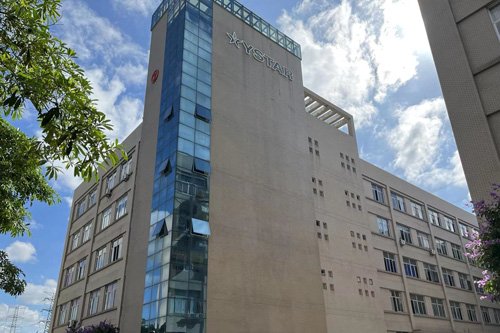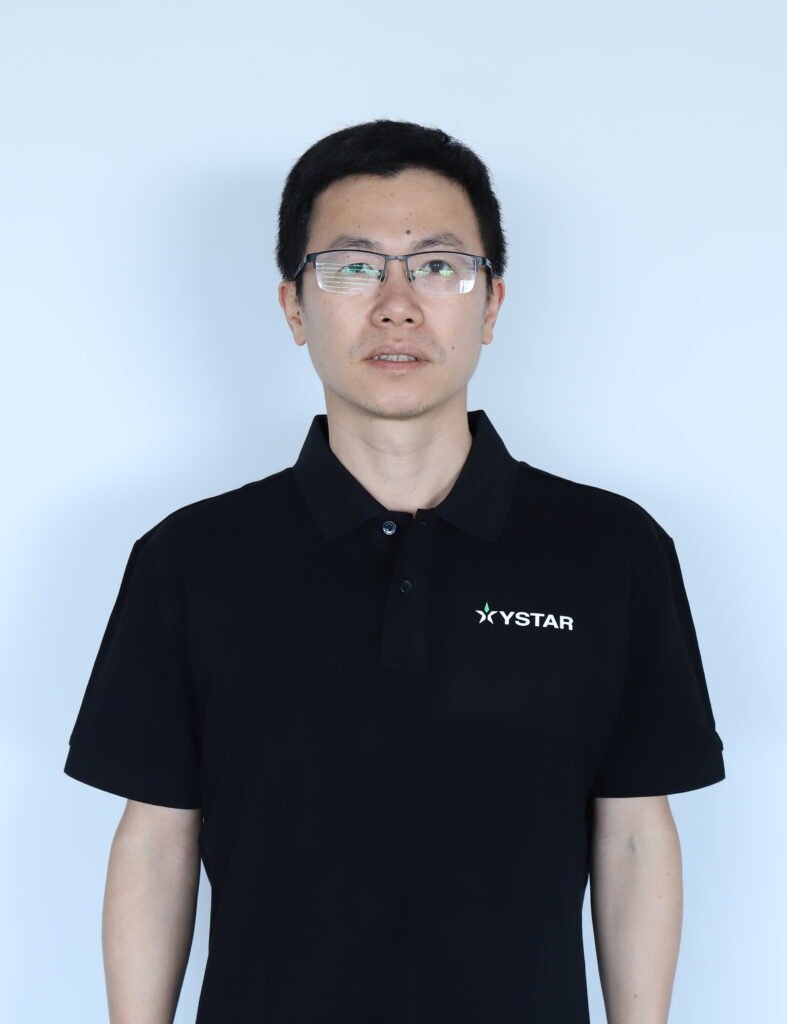As a result of developments in textile technology, the world of yoga pants has seen a tremendous transformation, with the primary focus being on improving levels of performance, comfort, and style. Moisture-wicking and breathability stand out as crucial characteristics for sportswear, particularly for yoga aficionados who want textiles that can handle sweat and allow for proper airflow. These are two of the most important elements that activewear should have. This article delves into the most recent fabric innovations that are utilized in yoga pants to satiate these requirements, analyzing the science that underpins them as well as the advantages that they offer.
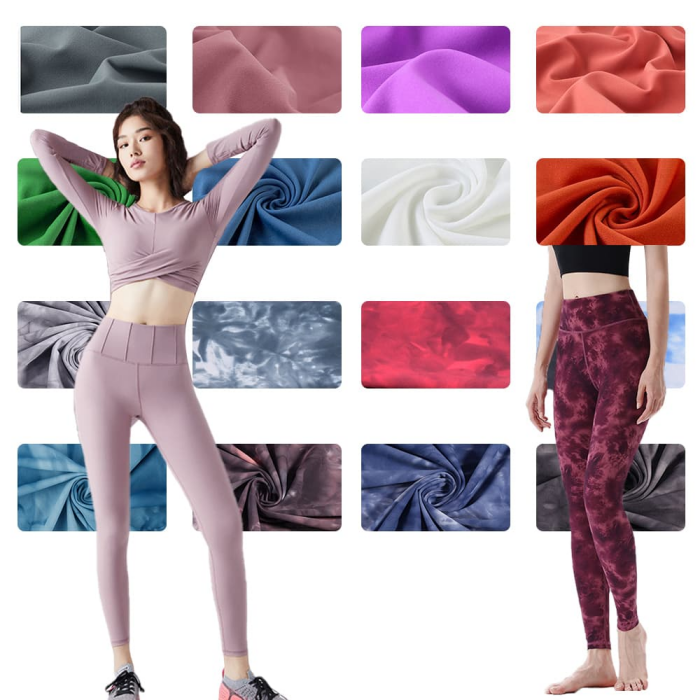
Moisture-Wicking Technologies
1. Polyester Blends
The hydrophobic qualities of polyester, which cause it to reject water rather than absorb it, make it an essential component in the production of moisture-wicking garments. The stretchability and comfort of yoga pants are improved when polyester is combined with additional fibers like spandex or elastane. Additionally, polyester maintains its outstanding moisture-wicking qualities. Perspiration is drawn away from the body by the fabric, which then distributes it across the surface so that it can evaporate more quickly.
2, polypropylene
Polypropylene is yet another type of synthetic fabric that is well-known for its exceptional quality of wicking away moisture. Because it has a poor absorption rate, it quickly transports moisture to the surface of the fabric, where it can evaporate. This allows the fabric to retain more moisture. Additionally, due to its low weight and insulating qualities, polypropylene is an excellent material for controlling temperature while doing physical activity.
3. Nylon (nylon)
Additionally, nylon, which is frequently used in conjunction with other synthetic fibers, possesses powerful moisture-wicking qualities. In order to remove sweat from the skin and distribute it evenly across the surface of the fabric, its molecular structure is precisely tailored to do so. Due to the fact that it is both extremely robust and resistant to abrasions, nylon is a material that is frequently used for high-performance yoga trousers.
4. CoolMax®
The Polyester fabric known as CoolMax® is a specialist material that has been created with an improved moisture-wicking mechanism. Its one-of-a-kind fiber architectures generate channels that improve the transit of moisture, which in turn makes quick evaporation easier to achieve. The CoolMax® fabric line is designed to give the wearer with the highest possible level of comfort during strenuous physical activity by ensuring that they remain dry and cool.
5. Lycra® Sport (S)
In order to create fabrics that not only stretch and recover, but also provide improved moisture management, Lycra® Sport fabric is created by combining Lycra® fiber with additional fibers. By incorporating Lycra® into the design of the yoga pants, not only are they more comfortable to wear and flexible, but they also ensure that sweat is effectively routed away from the skin.
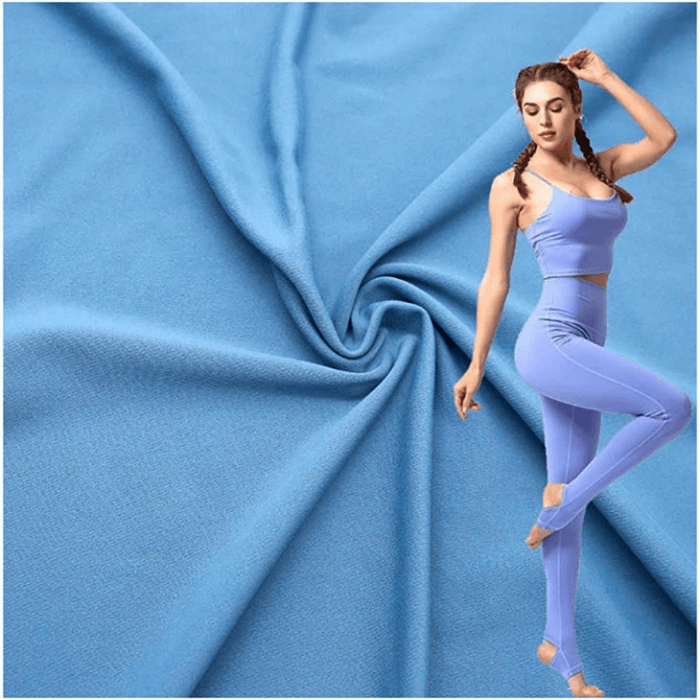
Technologies That Allow Breathing-In
Fabrics made of microfiber
A synthetic material that is finer than silk, microfiber is characterized by remarkable breathability and the ability to wick away moisture very effectively. In spite of the fact that they act as a barrier against moisture, the ultra-fine fibers produce a high-density weave that allows for airflow. Microfiber materials are used for yoga pants because of their dual purpose, which makes them very effective.
Panels made of mesh
A significant improvement in breathability can be achieved by incorporating mesh panels into yoga trousers. Increasing air circulation is made possible by these panels, which are typically positioned in high-sweat locations such as behind the knees or along the sides during exercise. Polyester and nylon are two examples of synthetic fibers that are commonly used in the production of mesh. These fibers have the ability to wick moisture while also facilitating airflow.
Textiles with Perforations
Small holes in perforated fabrics allow for increased airflow, which contributes to the fabric’s high level of breathability. For the purpose of targeting parts of the body that demand additional ventilation, these textiles can be strategically placed in yoga trousers. Maintaining a balance between breathability and moisture-wicking is made easier by the holes, which ensures that the wearer is comfortable when working out.
Fiber from Bamboo
Fiber made from bamboo is a natural material that is well-known for its ability to wick away moisture and offer breathability. It has a high capacity for absorption, which means that it draws moisture away from the skin and enables it to evaporate almost immediately. As a result of its naturally occurring antibacterial and hypoallergenic properties, bamboo fiber is an excellent option for individuals with sensitive skin.
Technology based on Cocona®
In order to improve the performance of fabrics, the Cocona® technology makes use of activated carbon that is obtained from coconut shells. By utilizing this cutting-edge material, breathability and moisture-wicking qualities are significantly improved. Because of the porous nature of activated carbon, it is able to effectively absorb and release moisture, which guarantees that yoga pants that are manufactured using .
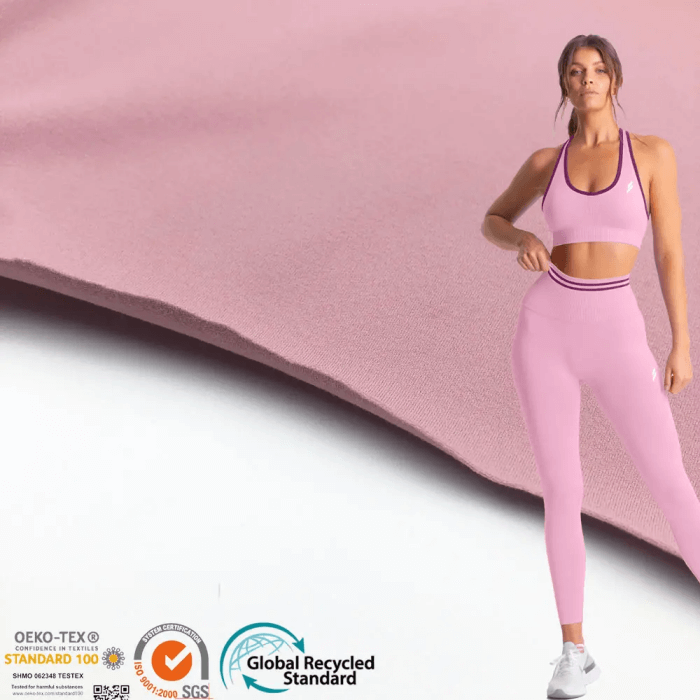
Cocona® technology will remain dry and comfortable
There are two types of hybrid technologies:
1. Polyester-Spandex Combinations
When polyester and spandex are combined, the result is a fabric that is not only very flexible but also is able to drain away moisture. The stretchability of spandex, combined with the ability of polyester to absorb moisture, results in yoga pants that are not only comfortable but also form-fitting and effective at regulating sweat.
Construction That Is Effortless
The technology of seamless construction involves knitting the garment in a single piece, which eliminates the need for seams and stitching. This approach not only increases breathability and moisture management, but it also makes the product more comfortable by removing friction areas. A greater airflow is made possible by the seamless design, which also decreases the likelihood of irritation occurring during movement.
Fabrics Knitted in Three Dimensions
In order to manufacture 3D knit materials, advanced knitting processes are utilized, which result in the creation of a structure that is multi-dimensional. The breathability and moisture-wicking characteristics of these materials can be improved by including a variety of yarns and patterns. Therefore, they are an excellent choice for yoga pants due to their three-dimensional construction, which allows for improved fit, comfort, and performance.
The Technology of Nanometers
For the purpose of improving the qualities of fibers, nanotechnology in the textile industry entails the manipulation of fibers at the molecular level. It is possible that this will result in increased moisture-wicking, breathability, and even odor resistance features for yoga trousers. Materials that have been developed using nanotechnology have the ability to repel water, wick perspiration more effectively, and provide improved ventilation in comparison to conventional fabrics.
Considerations Regarding the Environment
The use of recycled polyester
Recycled polyester, which is created from plastic bottles that have been used for consumer goods, is an environmentally beneficial alternative that has the same moisture-wicking and breathability properties as virgin polyester. The utilization of recycled materials leads to a reduction in the impact on the environment and provides support for sustainability initiatives within the textile sector.
Blends of organic cotton yarns
In spite of the fact that organic cotton on its own might not have the most effective moisture-wicking properties, the performance of organic cotton can be improved by combining it with other fibers such as spandex or polyester. The cultivation of organic cotton does not include the use of any synthetic pesticides or fertilizers, which makes it an environmentally responsible option that also offers comfort and breathability.
Fibers that are biodegradable
Biodegradable fibers, such as those made from corn or other plant materials, are gaining popularity as a result of recent innovations in this product category. The natural decomposition of these fibers at the end of their existence helps to reduce the impact that they have on the environment. Biodegradable fibers provide a more environmentally friendly alternative for yoga pants when they are paired with technologies that drain away moisture and allow air to pass through them.
Final Thoughts
A combination of innovation, performance, and sustainability can be seen in the most recent fabric technologies that are utilized in yoga pants. These technologies allow for moisture-wicking and breathability. These improvements ensure that yoga practitioners can enjoy the highest possible level of comfort and performance during their workouts. These advancements include things like hybrid technologies and eco-friendly materials, as well as innovative synthetic mixes and natural fibers. Yoga pants are not just a utilitarian item of clothing, but they are also a monument to the power of modern fabric technology. This is because the textile industry is always evolving and incorporating new scientific findings, which is pushing the boundaries of what activewear can do.

